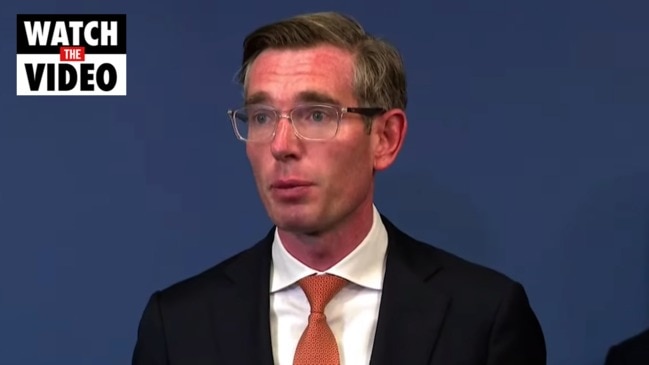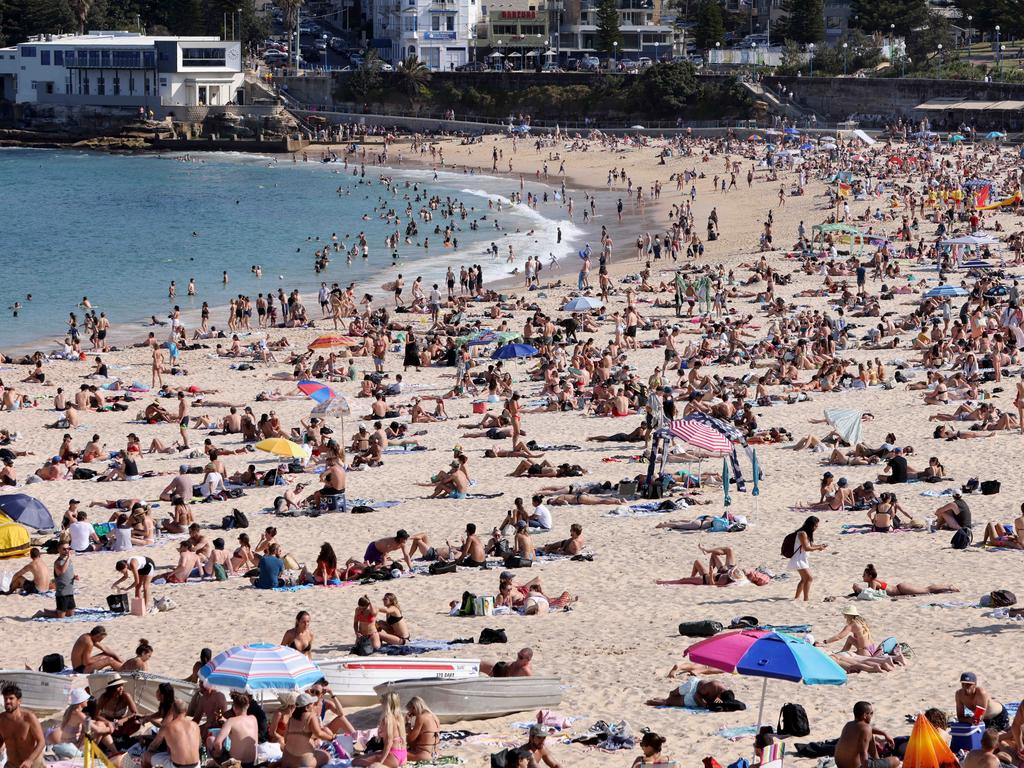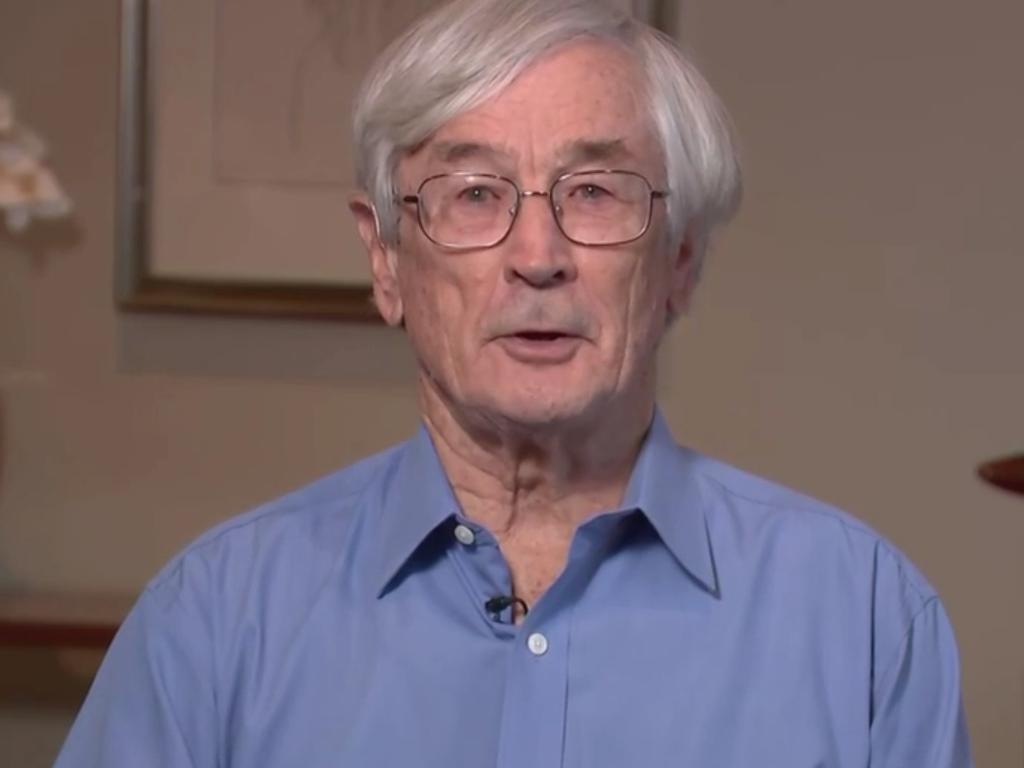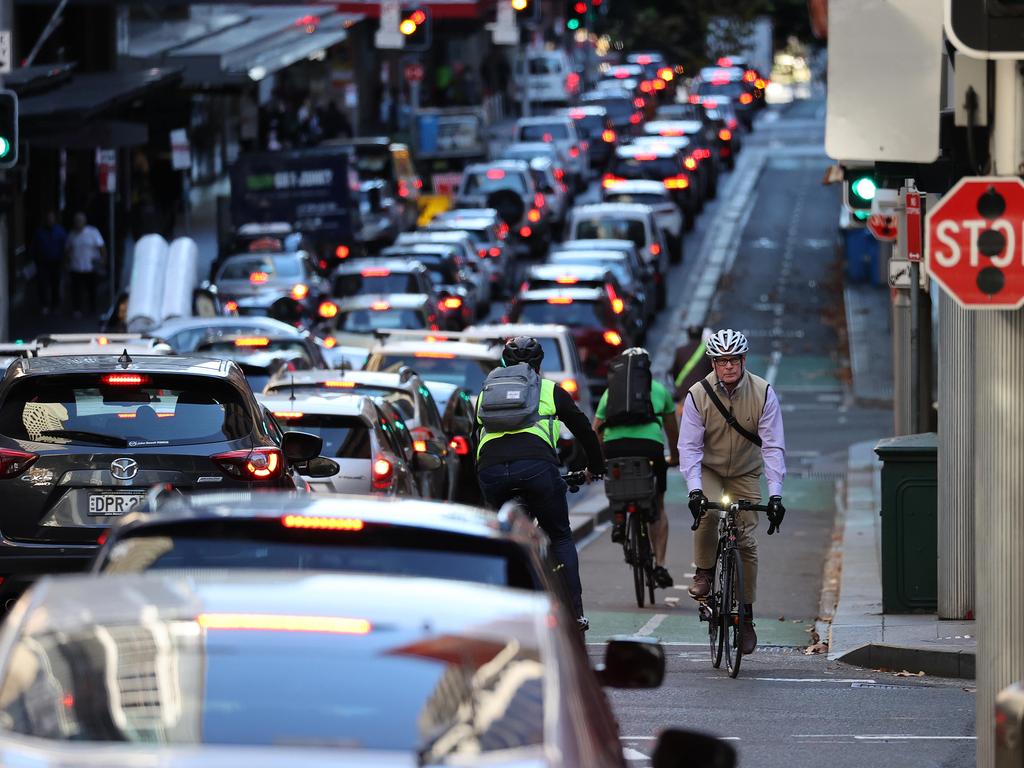Plan for two million migrant surge blasted as ‘crazy’ by Dick Smith
Aussie entrepreneur Dick Smith has labelled a plan to bring in two million more migrants post-Covid as “crazy”.

NSW Premier Dominic Perrottet says he “believes in a big NSW”, after a leaked proposal to bring in two million more migrants to rebuild Australia post-Covid was lashed as “crazy” by entrepreneur Dick Smith.
The Australian Financial Review on Tuesday revealed that top NSW bureaucrats had urged the incoming Premier to push for an “explosive” post-WWII-style immigration surge that could bring in two million people over five years.
The “top-secret, politically sensitive” advice was part of an incoming briefing document prepared by the Department of Premier and Cabinet, delivered to Mr Perrottet’s desk as he took up the top job last week, according to the newspaper.
In it, the bureaucrats urged Mr Perrottet to seize on the initiative to push for a “national dialogue on an aggressive resumption of immigration levels as a key means of economic recovery and post-pandemic growth”.
“An ambitious national immigration plan similar to Australia’s post-World War II approach would ensure Australia would benefit from skills, investment and population growth,” the document said.
The advice advocated for a “doubling” of pre-Covid immigration levels for the next five years. Net overseas migration reached 240,000 in 2018-19, before falling sharply to around 194,000 in 2019-20.
A doubling of pre-pandemic levels would see net migration surge to more than 400,000 a year, adding around two million people by 2026.
Peter Shergold, chancellor of Western Sydney University and the Commonwealth’s former top bureaucrat, supported the proposal.
“There is a need to return to higher levels of migration across the board, both in terms of skilled migration and being more generous to people coming in under specialist humanitarian visas and, indeed, international students returning on temporary visas,” he told the AFR.
“These things are very important to the economic future of NSW.”

‘I believe in a big NSW’
Speaking to reporters on Wednesday, Mr Perrottet confirmed he wanted immigration increased to address labour shortages.
“There’s no doubt that with the closure of international borders, immigration has come to a halt,” he said.
“We are seeing one of the biggest challenges at the moment as we’re opening up our economy, labour shortages are coming to the fore.”
Mr Perrottet said he had already discussed immigration with federal Treasurer Josh Frydenberg last year, and “obviously I think we’re going to have a real discussion around catching up some of those numbers that we’ve lost during the pandemic”.
“I think that’s important – I’m somebody who believes in a big NSW, I think that provides greater opportunity and prosperity for people right across the state,” he said.
“It provides important workers for businesses. So that is something that will become a significant challenge for our state and our country as we move forward, but it’s something I believe we will necessarily address, working with the federal government.
“It will need to be targeted in the short term in relation to where those labour shortages are. Obviously that will also differ across state borders.”
Mr Perrottet said the first priority was on bringing home stranded Australians “who are double vaccinated”.
“That then paves the way (for) international students, which is crucial to the NSW economy, our largest service export supporting tens of thousands of jobs across our state,” he said.
“Our international education exports have been significantly hit during this pandemic and it’s crucial to our economy going forward and we need to reclaim the markets we had and also explore other markets in the future.
“What’s the next stage after returning Australians? You move to tourism and you move to labour, and immigration will be a key focus. I want to have those conversations with the federal government as quickly and as early as possible. The earlier we have those discussions the brighter our future will be.”

Perrottet argued against immigration
The advice marks a sharp change in tone from the NSW government prior to the pandemic.
In 2018, former Premier Gladys Berejiklian called for a halving of immigration to the state to keep up with infrastructure demands, saying NSW needed “a breather because rates have gone through the roof”.
Weeks later, Mr Perrottet, then NSW Treasurer, wrote an opinion piece for The Australian arguing against “extraordinarily high rates of immigration”, saying “merely adding more people isn’t a sustainable economic strategy”.
“We can’t pretend that high immigration comes without a cost, and we believe growth should not impose an unfair burden on those already here,” he wrote.
“Excessively rapid growth puts downward pressure on wages and upward pressure on housing prices, both of which have sorely stung workers and aspiring homeowners in Sydney and other parts of NSW for a decade.
“It also means more people on trains, more cars, more students in our schools and more patients at hospitals.
“Even if the NSW population stayed at today’s level, it would take time to complete the work so that our communities could be more liveable, our commute times more manageable, and our schools and hospitals more capable of offering exceptional care rather than just coping.
“Instead, extraordinarily high rates of immigration risk pushing those outcomes beyond our grasp.”

Dick Smith blasts ‘crazy’ plan
Speaking to Sky News on Tuesday night, Mr Smith, a long-time critic of high immigration policies, said it was “ridiculous”.
“Consider the long-term average immigration has been about 80,000 per year, and that’s given us the fantastic country we are now, to go to 400,000, it would take us to that 100 million population figure,” he said.
“No one wants 100 million, it’s an arid country, we’d be crazy to go to that size.”
Host Peta Credlin, who was chief of staff to former Prime Minister Tony Abbott, said that high immigration was “pushed constantly by the bureaucracy”.
“I know from my time in Canberra, it was lazy growth,” she said.
“Just keep bringing the migrants in, the numbers will look good in an economic sense. But per capita it doesn’t work and people end up feeling worse off, they feel poorer, and they live with the consequences of infrastructure that’s not fit for purpose according to the population.
“Why can’t we have a sensible population debate and plan?”
Mr Smith said it was “going to be very hard because the bureaucrats all go to the same universities” and only cared about headline economic growth.
“If it was growth per person it would be OK but it isn’t,” he said. “Per person we’ve actually got less growth. We’ve got to move to growth from efficiencies, from improving productivity, not having more and more people.”

‘A disaster for living standards’
Leith van Onselen, chief economist at MacroBusiness, said the plan was the “definition of insanity”.
“Every Australian knows that the pre-Covid 15-year immigration boom, whereby net overseas migration averaged 220,000 a year, was a disaster for living standards, as evidenced by things like declining housing affordability and quality, worsening commute times, and record low wage growth,” he said.
“The definition of insanity is to double the post-Covid immigration intake and to expect different results.”
Mr van Onselen questioned whether there would be “matching infrastructure, housing and improved labour and environmental laws to go along with the proposed immigration boom”.
“We all know the answer to that,” he said.
“Policy-makers will juice headline GDP growth and business profits by flooding the nation with people, while ignoring the negative impacts on the community.”
Simon Kuestenmacher, co-founder and director of The Demographics Group, told 3AW on Tuesday the plan was “definitely not unrealistic”.
“There’s no problem at all accommodating 400,000 new people per year, as long as we provide enough infrastructure, as long as we provide enough housing.”
Mr Kuestenmacher claimed that as most skilled migrants were young, single people who lived in small dwellings, “even a large migration intake wouldn’t even have a massive impact on the housing market in terms of the need for new dwellings”.
The big issue, he said, was infrastructure.
“The good news is the federal budget really doubled down on infrastructure growth, so they’re willing to spend an awful lot of money on infrastructure,” he said.
“The problem is ... all industries complain about the lack of skilled workers. So we do actually need migration to actually build all the infrastructure things we are willing to pay for.”






